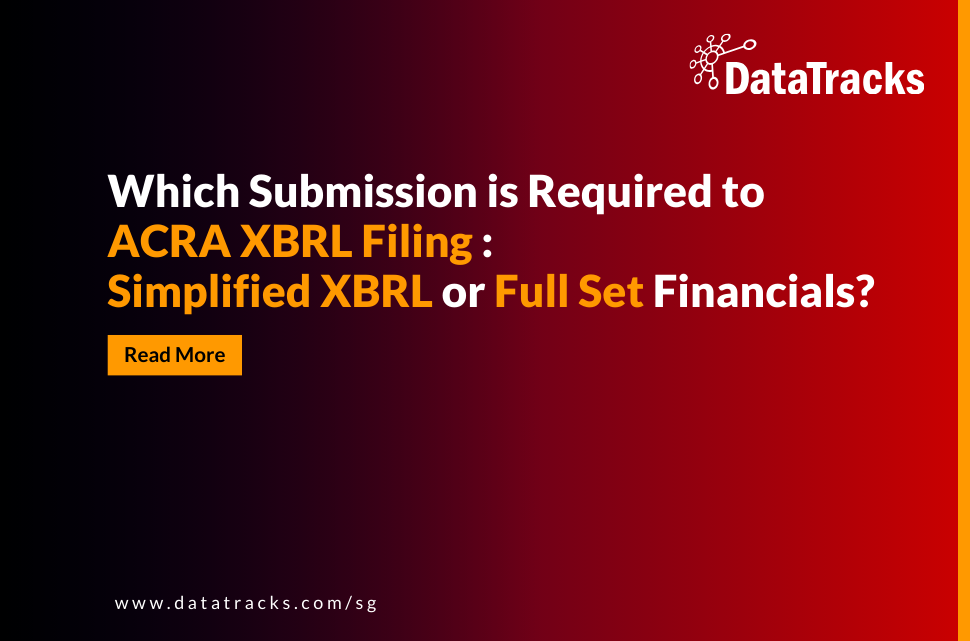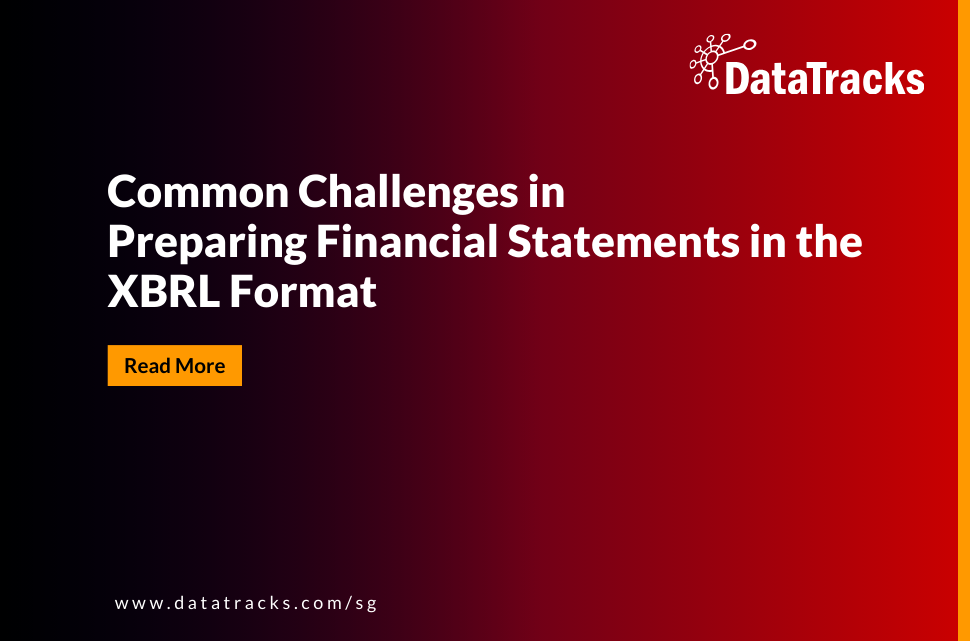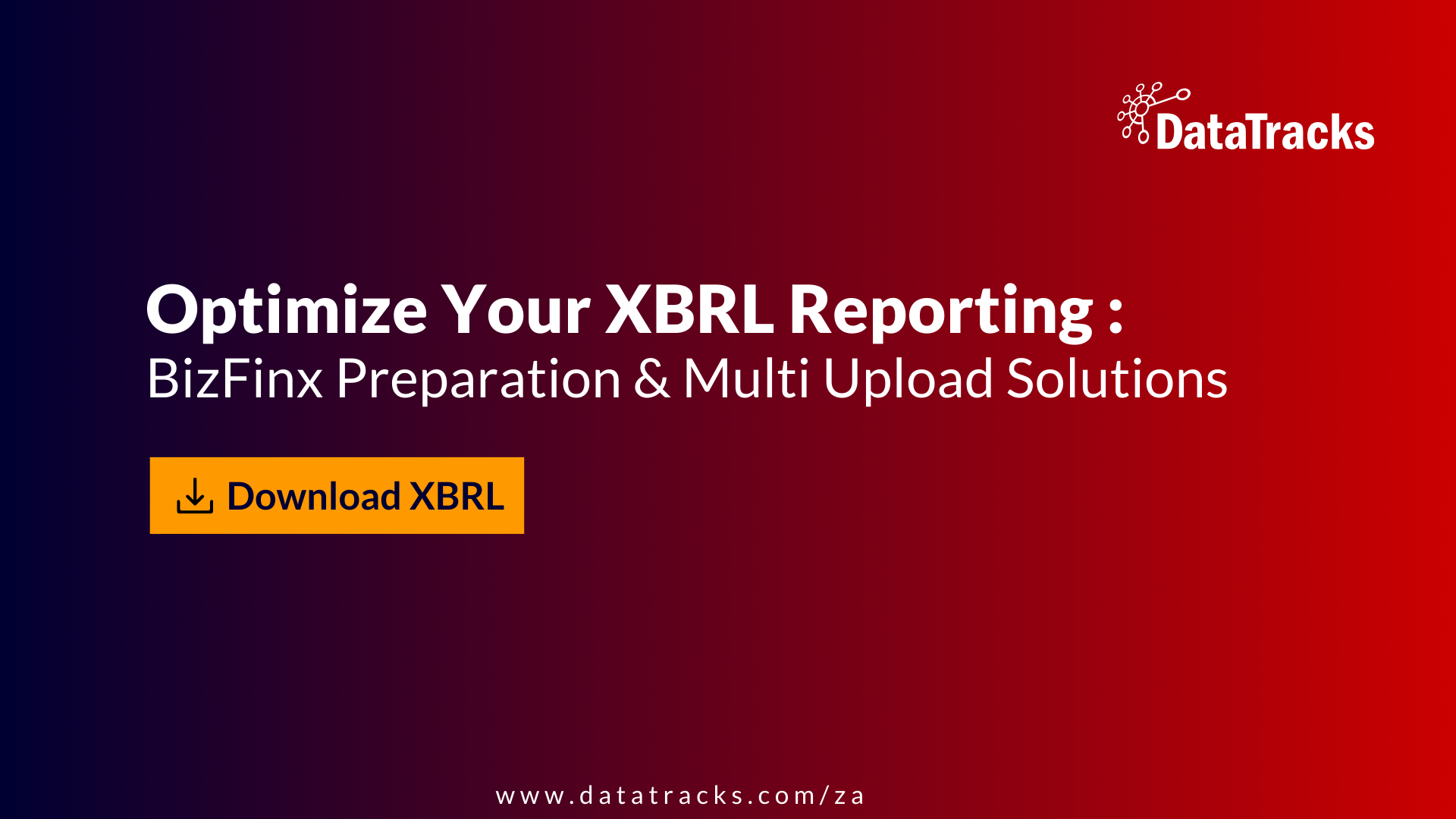Embracing IFRS and XBRL Taxonomy in Singapore for Financial Transparency
Introduction: The Evolution of Financial Reporting in Singapore
Singapore’s financial landscape has always been proactive in adopting global trends to improve the transparency, consistency, and effectiveness of financial reporting.
With the global shift towards International Financial Reporting Standards (IFRS), Singapore has positioned itself at the forefront of this transformation, ensuring that its financial practices align with the highest international benchmarks.
With this strategic alignment, the country’s global financial hub status is further strengthened, enabling smooth cross-border investment and financial analysis.
IFRS Adoption in Singapore: Setting a New Standard
The adoption of IFRS in Singapore underscores the country’s commitment to high-quality, transparent financial reporting. With the incorporation of IFRS into its accounting framework, Singapore has effectively simplified financial statements, enhancing their clarity and facilitating international comparisons.
This move is crucial for investors, stakeholders, and corporations, offering them the peace of mind of having reliable and consistent financial reporting.
Singapore’s Alignment with International Standards
In Singapore, the transition to Singapore Financial Reporting Standards (SFRS), modeled after the IFRS, marks a significant step towards aligning local accounting practices with international benchmarks.
Effective from 1 January 2003, all Singaporean companies are mandated to comply with SFRS, ensuring consistency and comparability in financial reporting across borders.
Embracing Accrual-Based Accounting
Accrual-based accounting is a fundamental aspect of Singapore’s accounting framework. This approach acknowledges the impact of transactions and events as they happen, regardless of the actual flow of money.
This approach offers a more precise depiction of a company’s financial condition by considering future cash obligations and receivables. It provides stakeholders with a holistic understanding of the entity’s financial well-being, going beyond simple cash transactions.
The Structure of Singapore’s Accounting Standards
Singapore has around 41 different accounting standards, which are identified by a designation of FRS followed by a number, such as FRS 1. These standards encompass a broad array of subjects, spanning from the formatting of financial statements to the identification of revenue and management of inventory.
With a meticulous approach, financial reporting in Singapore is thorough and in line with global best practices. This enables better communication with international markets and stakeholders.
In summary, Singapore’s adoption of SFRS and the principle of accrual-based accounting demonstrates its commitment to enhancing the quality and comparability of financial reporting. By aligning with IFRS, Singapore strengthens its position in the global financial landscape, ensuring its financial statements meet the rigorous demands of international investors and regulatory bodies.
Singapore Financial Reporting Standards (SFRS): A Comprehensive Overview
The Singapore Financial Reporting Standards (SFRS) are the bedrock of financial reporting and disclosure for entities across Singapore, covering a broad spectrum from companies and partnerships to sole proprietorships. Designed to ensure accuracy, transparency, and consistency in financial reporting, SFRS holds a pivotal role in the financial landscape of Singapore.
Applicability Across Entities in Singapore
SFRS is universally applicable to entities within Singapore, embracing a wide array of organizational structures. This inclusivity ensures that whether an entity is a company, a partnership, or a sole proprietorship, it aligns with the highest standards of financial reporting and accountability. Publicly accountable entities, however, may encounter additional reporting requisites to meet the stringent demands for transparency and integrity.
Measurement Principles Under SFRS
Central to the SFRS framework is the application of measurement principles, predominantly focusing on the fair value or cost model. These principles guide the recognition and measurement of assets and liabilities, providing a solid foundation for accurate and reliable financial reporting in line with Singapore’s accounting standards.
Key Standards Within SFRS
The structure of SFRS is delineated into individual standards that address specific aspects of financial reporting:
- SFRS 15 (Revenue from Contracts with Customers): Sets the standards for revenue recognition, ensuring that revenue is accurately accounted for and reported.
- SFRS 109 (Financial Instruments): Governs the reporting and management of financial instruments, emphasizing transparency and risk management.
- SFRS 16 (Leases): Outlines the treatment and reporting of leases, offering clarity and consistency in lease accounting.
Disclosure Requirements in SFRS
A critical component of SFRS is its detailed disclosure requirements, which mandate entities to provide comprehensive insights into their accounting policies, estimates, and judgments. These disclosures are vital for understanding the financial statements’ underlying assumptions, related parties, contingencies, and significant events affecting the financial position.
Reconciliation and Closing Balances
SFRS requires entities to present detailed reconciliations and closing balances for certain items, enhancing the clarity and completeness of financial reporting. This aspect is crucial for accounts related to financial instruments, subsidiary investments, and property, plant, and equipment.
Financial Risk Management in SFRS
With a dedicated standard, SFRS 107 (Financial Instruments: Disclosures), SFRS encompasses guidance on disclosures concerning financial risk management. This standard is instrumental in addressing the management of credit risk, market risk, and liquidity risk, aligning with the best practices in financial reporting standards in Singapore.
Guidance and Support for Applying SFRS
The Singapore Accounting Standards Council provides extensive resources, including practice statements and interpretations, to assist entities in applying SFRS effectively. This support infrastructure ensures that entities can navigate the complexities of financial reporting with confidence, upholding the integrity and reliability of financial disclosures in Singapore.
SFRS for Small Entities
In 2009, the International Accounting Standards Board (IASB) introduced a specialised IFRS for SMEs to cater to the specific needs of small and medium-sized enterprises (SMEs) worldwide.
In November 2010, the Accounting Standards Council (ASC) of Singapore introduced the Singapore Financial Reporting Standard for Small Entities (SFRS for SE) as part of their ongoing efforts.
This standard offers a specialised option for eligible SMEs in Singapore, starting from reporting periods beginning on or after 1 January 2011.
Framework Objectives and Eligibility
The SFRS for SE aims to alleviate the burden of compliance with the full SFRS for eligible small entities, while still ensuring the quality, transparency, and comparability of financial reporting. This serves the dual purpose of benefiting both the investment community and other financial statement users. To qualify for the SFRS for SE, an entity must meet specific criteria:
- It should not be publicly accountable.
- It should produce general-purpose financial statements for external users.
- It is considered a small entity, meeting at least two of the following conditions:
- Annual revenue of no more than S$10 million.
- Gross assets of no more than S$10 million.
- No more than 50 employees.
Eligibility for this simplified standard is based on the entity meeting these criteria for the two consecutive years prior to application. Once qualified, an entity can continue using the SFRS for SE until it exceeds the size criteria for two consecutive reporting periods, at which point it must transition to the full SFRS.
Special Consideration for Subsidiaries
Subsidiaries of holding companies that comply with the full SFRS are also eligible to adopt the SFRS for Small Entities, provided they meet the established criteria. This flexibility ensures that smaller entities, regardless of their corporate structure, can benefit from a framework designed to suit their scale and complexity.
Difference Between SFRS and SFRS for SE
| Category | SFRS (Singapore Financial Reporting Standards) | SFRS for SE (Singapore Financial Reporting Standards for Small Entities) |
|---|---|---|
| Applicability | Applies to all entities, regardless of size. | Specifically tailored for small and medium-sized entities (SMEs). |
| Disclosure Requirements | Typically more comprehensive and intricate, requiring detailed information. | Simplified and more streamlined, reducing the complexity and volume of disclosures required. |
| Measurement Principles | Generally allows for the use of either the fair value or cost model, depending on the specific standard. | Primarily uses the cost model, with fair value measurement offered as an alternative option. |
| Specific Standards | Includes a wide array of standards such as SFRS 28, SFRS 40, SFRS 113, SFRS 1, SFRS 16, SFRS 107. | Aligns with SFRS but includes specific exemptions and simplifications suited to the needs of small entities. |
| Reconciliation and Closing Balances | Reconciliation and reporting of closing balances are mandatory for certain standards. | Generally not required, simplifying year-end financial processes for small entities. |
| Financial Risk Management | Detailed disclosures on financial risk management are required. | Not mandated, reflecting the less complex nature of financial risk management in smaller entities. |
| Preparation and Presentation | Financial statements must comply with the Singapore Companies Act and other applicable laws and regulations. | Must adhere to the Accounting Standards for Small Entities and relevant legal frameworks, ensuring suitability for SMEs. |
| Audit Requirements | Mandatory audit for all companies, ensuring adherence to SFRS and regulatory standards. | Audit exemption for eligible SEs meeting specific criteria, such as having total assets not exceeding SGD 10 million and fewer than 50 employees, to alleviate the regulatory burden. |
| Guidance Availability | Extensive guidance and interpretative materials are available to assist entities in applying SFRS. | Limited guidance and interpretative materials, with some provided by the Accounting Standards for Small Entities to support application. |
Improving Financial Disclosure with XBRL Taxonomy
One important aspect of Singapore’s financial reporting development is the adoption of the eXtensible Business Reporting Language (XBRL) taxonomy. XBRL is a digital financial reporting language that facilitates the electronic transmission of financial data, resulting in improved efficiency, accuracy, and accessibility of financial information.
With the adoption of the XBRL taxonomy, in line with IFRS standards, Singapore has made substantial enhancements to the reporting, analysis, and utilisation of financial data by investors, regulators, and other stakeholders.
Streamlining Financial Reporting with XBRL Taxonomy
Organising and categorising financial data effectively is crucial for seamless analysis and interpretation. By adopting a comprehensive IFRS-aligned XBRL taxonomy, Singapore has successfully standardised financial reports, ensuring that they can be easily understood and compared across the board.
This adherence to international financial reporting standards guarantees that financial statements are uniform and adaptable to meet individual reporting requirements, ultimately enhancing the clarity and effectiveness of financial disclosures.
Key Benefits of XBRL Taxonomy
- Enhanced Accuracy and Efficiency: Automated data collection and reporting reduce human errors, speeding up the financial reporting process.
- Improved Comparability: Standardized data formats allow for easier comparison across different entities and time periods.
- Greater Accessibility: Financial data becomes more accessible to a wide range of users, facilitating better investment decisions and regulatory compliance.
Understanding the ACRA Taxonomy 2022 v1.0 for XBRL Filings
ACRA Taxonomy 2022 v1.0, plays a crucial role in facilitating the consistent electronic submission of financial statements to the Accounting and Corporate Regulatory Authority (ACRA) in Singapore. This framework is designed to assist experienced users of the XBRL (eXtensible Business Reporting Language) specifications in simplifying the financial reporting process and ensuring adherence to current regulatory requirements.
Following the guidelines of Singapore Financial Reporting Standards (SFRS) and utilising ACRA Taxonomy
The taxonomy is in close alignment with the Singapore Financial Reporting Standards (SFRS), as issued by the Accounting Standards Council (ASC). Ensuring strict adherence to Singapore’s recognised financial reporting standards, all electronic financial submissions via the XBRL Taxonomy are meticulously reviewed.
AGM Financial Statements Requirements and the Singapore ACRA Taxonomy
- Mandatory Financial Data for AGM: This section specifies the essential financial information required under the Singapore Companies Act for AGM financial statements, facilitated by the ACRA Taxonomy.
- Considerations for Listed Companies: Details additional reporting requirements for financial statements of entities listed on the Singapore Exchange Securities Trading Limited (SGX), underpinned by the Singapore ACRA Taxonomy.
Expanded Reporting Obligations with ACRA Taxonomy
- Independent Auditors’ Report Compliance: Explains the taxonomy’s support for reporting in line with the Singapore Standards of Auditing, facilitating the integration of the auditors’ findings.
- Document and Entity Information (DEI): Specifies the necessary data for accurately identifying the reporting entities, enhancing the clarity and reliability of financial reports.
- Banking Act Reporting Elements: Highlights the unique reporting components required under the Banking Act Notices, catering to the specialized reporting needs of the banking sector.
- Practices in Common Reporting: Describes the financial statement items frequently reported by companies across Singapore, promoting consistency and comparability in financial disclosures.
This version of the ACRA Taxonomy is pivotal for entities in ensuring compliant, accurate, and efficient electronic financial reporting. By encompassing a wide range of reporting standards and requirements, the ACRA Taxonomy 2022 v1.0 plays a critical role in enhancing the integrity and transparency of financial disclosures in Singapore’s corporate landscape.
The Role of DataTracks in Facilitating XBRL Reporting
In this evolving financial reporting landscape DataTracks is a prominent player in the ever-changing world of financial reporting, providing tailored XBRL solutions and services. DataTracks offers crucial assistance to businesses in Singapore as they navigate the intricacies of financial reporting. With a comprehensive knowledge of the XBRL taxonomy and the IFRS accounting standards, DataTracks is well-equipped to provide the necessary support.
Their services are specifically tailored to help companies effortlessly synchronise their financial disclosures with the necessary XBRL taxonomy, ensuring compliance with both local and international accounting standards.
DataTracks specialises in XBRL reporting, making the compliance process for businesses easier. We ensure that financial statements are prepared accurately and communicated effectively.
Here are the advantages of partnering with DataTracks for XBRL Solutions:
- Streamlined reporting processes that align with Singapore’s financial reporting requirements.
- Enhanced compliance with IFRS standards through accurate XBRL tagging for ACRA filing.
Efficient and error-free submission of financial data to regulatory authorities.
Frequently Asked Questions
What are the Singapore Accounting Standards?
Singapore uses the Singapore Financial Reporting Standards (SFRS), which are largely based on the International Financial Reporting Standards (IFRS) issued by the International Accounting Standards Board (IASB). There is also a separate Singapore Financial Reporting Standard for Small Entities (SFRS-for-SE) that can be used by qualifying companies.
What is the significance of IFRS in Singapore’s financial reporting?
IFRS, or International Financial Reporting Standards, provide a common language for business affairs so that company accounts are understandable and comparable across international boundaries. Singapore’s adoption of IFRS ensures that financial statements are transparent, reliable, and comparable globally.
Are all companies required to have their financial statements audited in Singapore?
All companies preparing SFRS financial statements must have them audited. However, small entities using SFRS for SE may be exempt from audit requirements if they meet certain criteria, such as having total assets of not more than SGD 10 million and fewer than 50 employees.
How does XBRL taxonomy enhance financial reporting in Singapore?
XBRL (eXtensible Business Reporting Language) taxonomy improves financial reporting by making the electronic communication of financial data more efficient, accurate, and accessible. This aligns with IFRS standards and significantly enhances the way financial data is reported and analyzed.
Who needs to comply with the Singapore Financial Reporting Standards (SFRS)?
All entities in Singapore, regardless of size, must comply with SFRS, which are based on the International Financial Reporting Standards (IFRS).
What are the SFRS for Small Entities (SE), and who can apply them?
SFRS for SE is a simplified financial reporting framework designed for small and medium-sized entities (SMEs). Entities that are not publicly accountable, publish general-purpose financial statements, and meet specific size criteria are eligible to apply SFRS for SE.
What are the main differences between SFRS and SFRS for SE?
The main differences include applicability, disclosure requirements, measurement principles, specific standards, and audit requirements. SFRS for SE offers a simplified approach for eligible SMEs, reducing the complexity and burden of financial reporting.
Can a subsidiary of a holding company that follows the full SFRS adopt the SFRS for SE?
Yes, a subsidiary of a holding company can adopt the SFRS for SE, provided it meets the prescribed eligibility criteria, offering flexibility for smaller entities within larger corporate structures.
What role does taxonomy play in financial reporting?
Taxonomy is crucial for organizing financial data, making it easier to categorize, analyze, and compare financial statements. The adoption of an IFRS-aligned XBRL taxonomy in Singapore facilitates better understanding and comparability of financial information.
How does DataTracks assist with XBRL filing for ACRA in Singapore?
DataTracks provides comprehensive XBRL solutions that help businesses convert their financial statements into XBRL format, ensuring full compliance with ACRA’s filing requirements. DataTracks’ services include the accurate tagging of financial data according to the latest Singapore XBRL taxonomy, which is aligned with both SFRS and IFRS, ensuring that all submissions meet the regulatory standards.
Are DataTracks’ XBRL solutions aligned with both Singapore IFRS and XBRL taxonomy?
Yes, DataTracks’ XBRL solutions are fully aligned with the Singapore Financial Reporting Standards (SFRS), which are based on the International Financial Reporting Standards (IFRS), and the specific XBRL taxonomy adopted by ACRA. This alignment guarantees that financial reports are prepared and filed in accordance with both local and international accounting standards.



